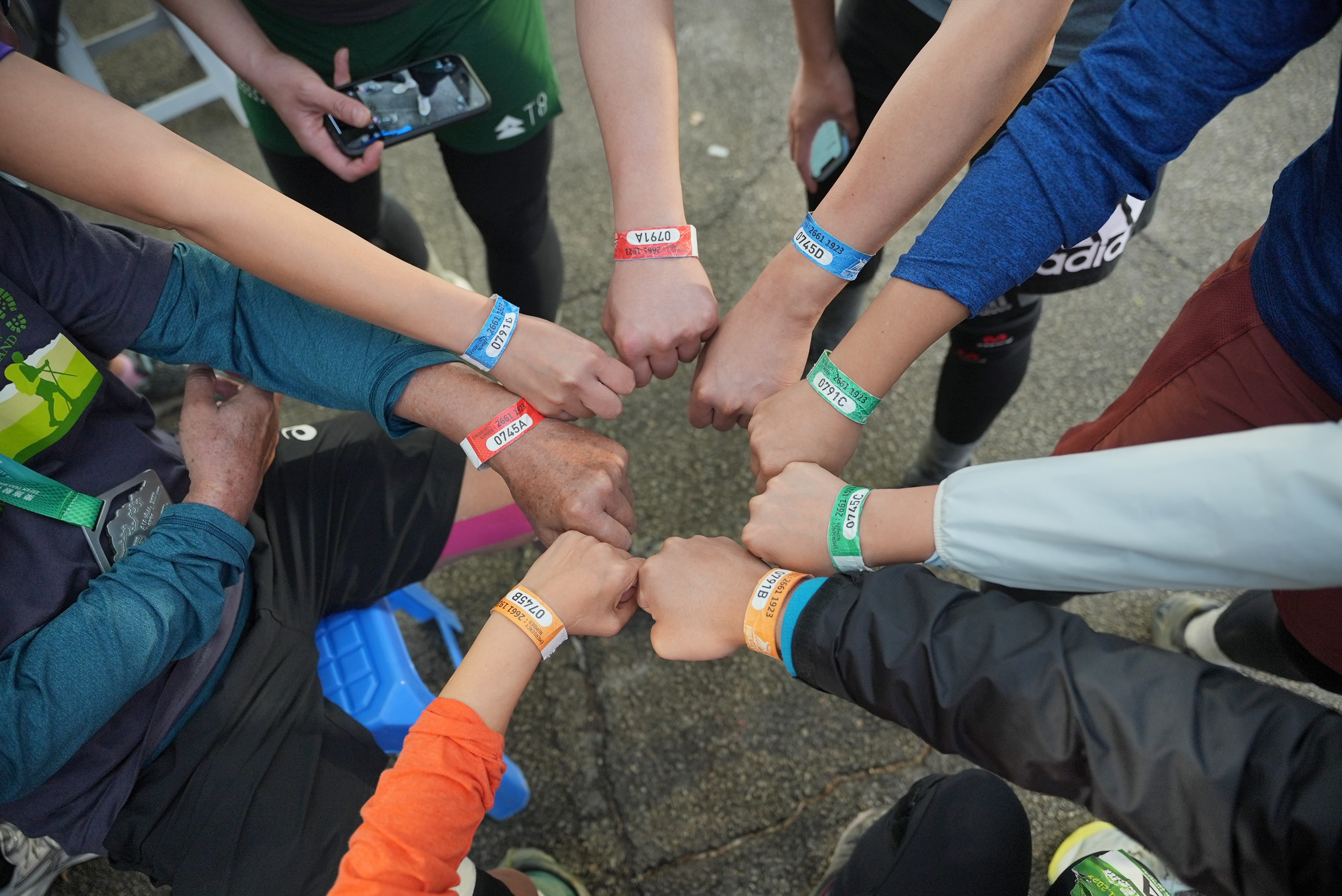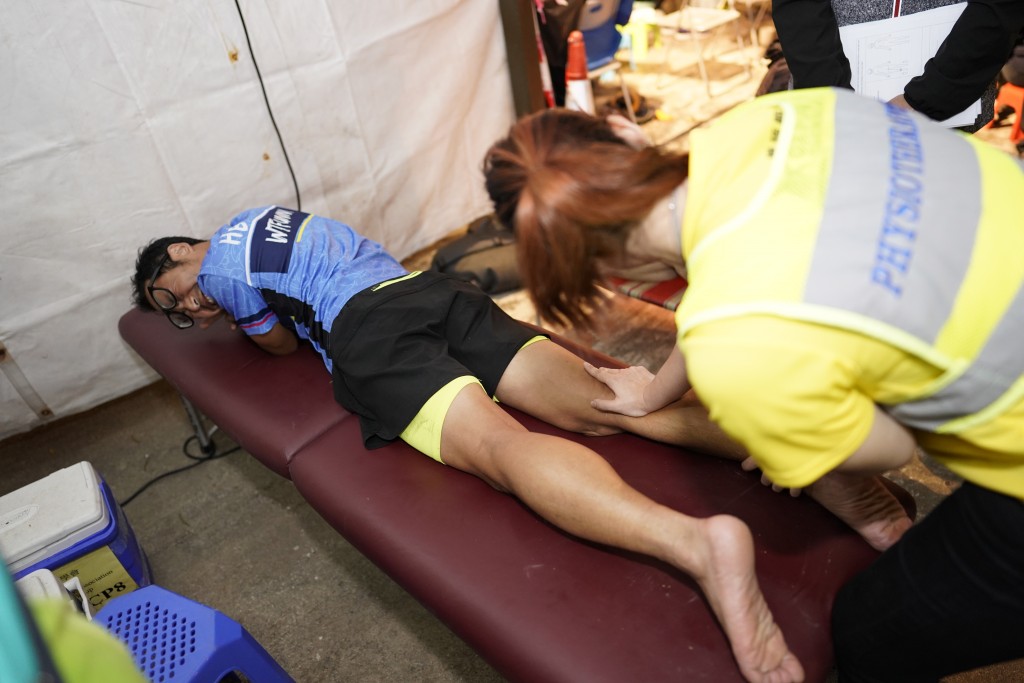Preparation
Oxfam Trailwalker is not an easy event, so participants must have a reasonable level of fitness, good planning, and adequate training. Attending a first aid course together with your teammates is recommended.
The Team Leader
Good communication and thorough understanding among team members are essential to avoid any disputes due to differences in expectations. The team leader in particular plays an important role in terms of preparing and coordinating before and after the event, and is required to:
- Confirm the team members as soon as possible and confirm that teammates are ready to commit the time and resources required to prepare for and attend the event.
- Work out a training schedule with teammates and set training targets for the team according to the team’s training progress.
- Put together a support team and ensure other preparations as well as the supporting plan and schedule are in place.
- Keep teammates and support team informed of the information provided by the Organiser.
- Collect all donations after the event and send them to Oxfam before deadline.

Training
Make sure you acquaint yourself with the route through practice walks, particularly sections where you will be walking in the dark. The trail is clearly marked on the countryside maps of Sai Kung & Clear Water Bay, North East & Central New Territories, and North West New Territories. These maps are available at the following Major Map Publications Centres:
– 23/F, North Point Government Offices, 333 Java Road, North Point, Hong Kong (Tel. 2231 3187)
– 382 Nathan Road, Yau Ma Tei, Kowloon (Tel. 2780 0981)
For the locations of CPs, please refer to P.31-35 or to the Oxfam Trailwalker Google Map on the Oxfam Trailwalker website. Always take a map and a compass with you when practicing.
- Start practicing NOW! Walk at least once a week for a minimum of four to six hours (about 15-25km). Plan a schedule with your teammates and stick to it. However, if weather conditions are unfavourable (e.g. rain, thunderstorms, or high temperatures coupled with high humidity) on the day of your training session, you should consider changing the route or even suspending practice. Since the rules require that team members stay together along the trail, it is advisable that all members practice walking at a similar speed.
- You are recommended to increase the distance and / or time of your walks slightly every time you practice. All walks should include some hill work and rough cross-country sections. Please also bear in mind that a large part of the trail is on concrete paths or roads and so you will also need to train on hard surfaces. By the end of the training period, you should be comfortable with walking continuously for 10-11 hours without difficulty.
- Please make sure you have sufficient food and water with you. Dehydration is a real risk and can result in serious injury or even death. The intake of appropriate levels of sodium (i.e. salt) is also recommended.
- As part of your training, choose a weekend to practice night hiking. Distance, terrain, and direction can feel very different in the dark, and walking on rough terrain while using a torch is a skill that needs to be practiced. Predict which sections of the trail you will be walking at night and choose them to practice night hiking.
- If support members or friends join any of your practices, be sure that they are sufficiently prepared as well to ensure their safety and that they can enjoy the walk.
- As the event draws near, perhaps prior to the last two weeks before the event, try walking about 8-10 hours over two consecutive This will help you get accustomed to walking when you are feeling stiff and tired. However, remember to allow your muscles to relax two weeks before the event.
- For those who want to complete the route with as little discomfort as possible, a short run everyday will serve as additional basic training in strength and fitness.
- Tired muscles start to stiffen after long rests. Shorter, more frequent stops are more advisable during the event.
- Warm up before you start the event and after subsequent rests. This will enhance the flexibility of your body.
- Letting the slowest teammate set the pace is a good tactic to finish as a whole team.
Mind Your Feet
- Wear a pair of good hiking boots or running shoes. Make sure your feet are well adapted to them before the event by wearing them on practice walks.
- Experienced walkers have found that double socking helps enormously. Some walkers recommend wrapping the feet with adhesive bandages while others suggest that you massage your feet with Vaseline prior to walking. Try these during your training sessions and pick what works best for your feet.
- A pedicure a week before the event will help you avoid toes injuries when going downhill.
- Changing socks as often as possible can help prevent blisters. Never try to remove a blister; instead, place a plaster over it.

What to Wear and Carry
- Plan what you are going to carry and what others will carry, then take turns carrying your shared items.
- It is most important that you carry sufficient water and warm clothes.
- Plan what to wear, remembering that the weather can change dramatically during the event. You will need warm clothing to change into, especially if your clothes become wet.
- Even in November, daytime temperatures can reach as high as 30°C. A hat or an umbrella and sunglasses are essential for protection from the sun.
- A reliable hiking pole can be very helpful for long walks like this.
- Water provides ideal rehydration but occasionally, a sweeter energy drink makes all the difference to a deflating spirit and tired legs. Lightweight, high-energy bars, or pieces of fruitcake are also helpful. However, fatty and high-protein foods should generally be avoided.
- Knee and ankle bandages are useful for preventing injuries to muscles, ligaments, and joints.
- Basic first aid will be provided at CPs. It is recommended that you also bring your own first aid kit and medicine in case of injuries or emergencies on the trail.